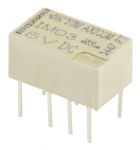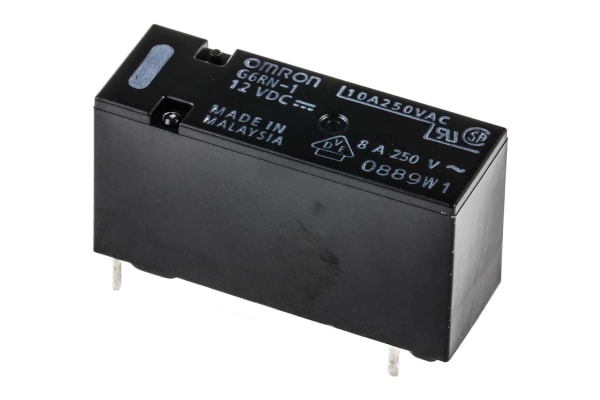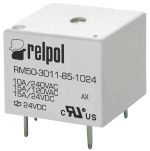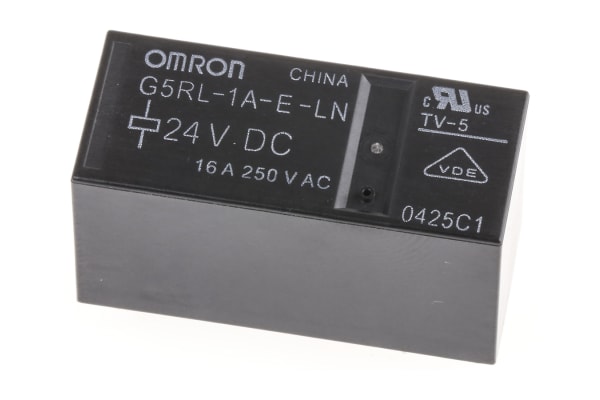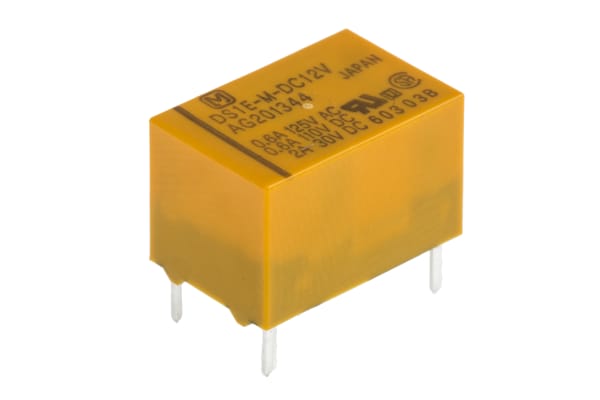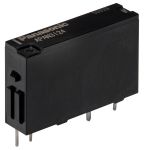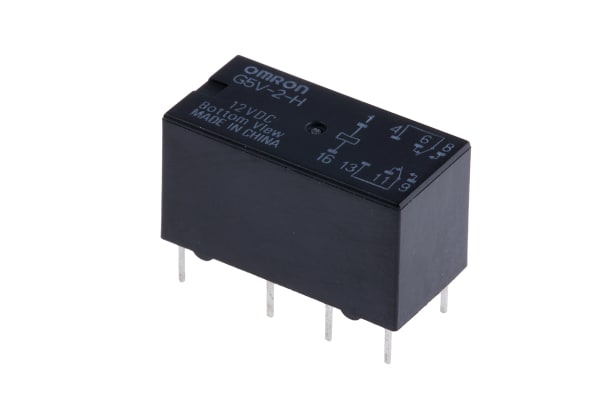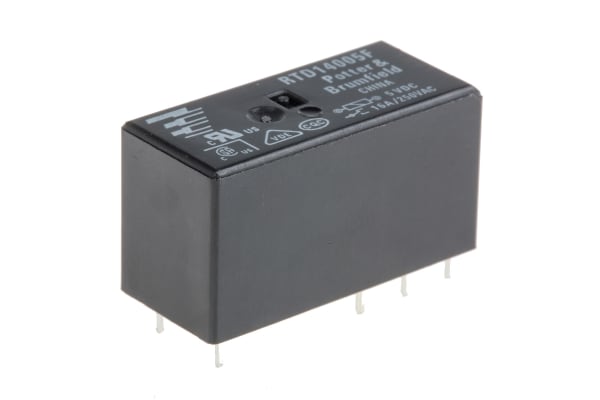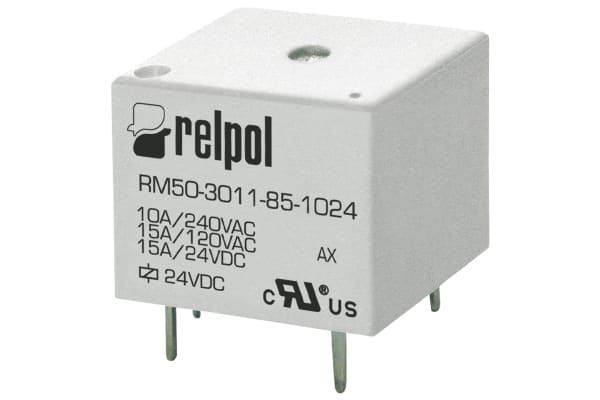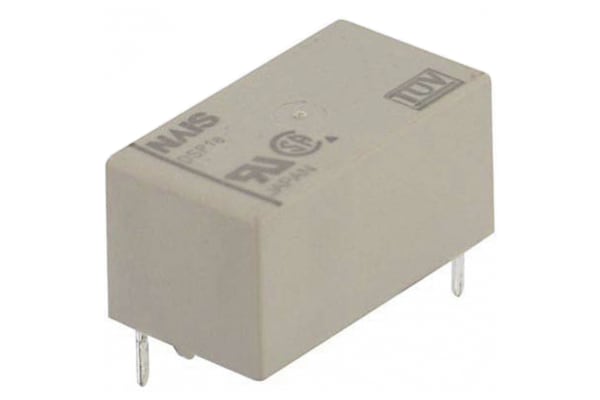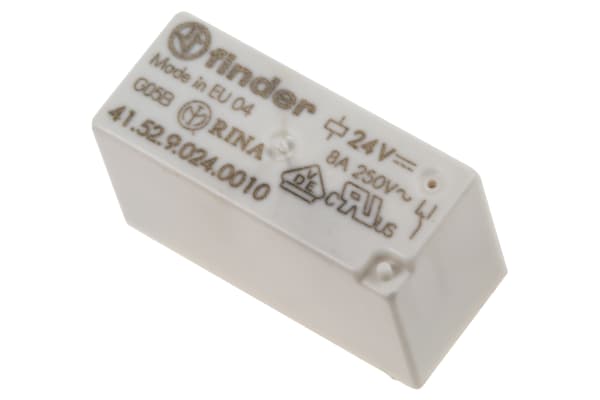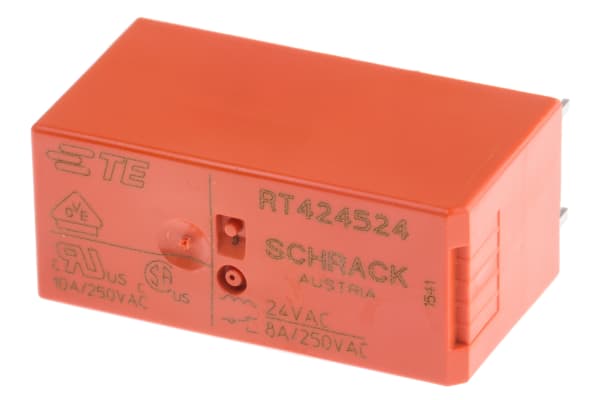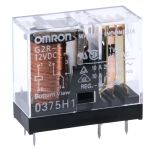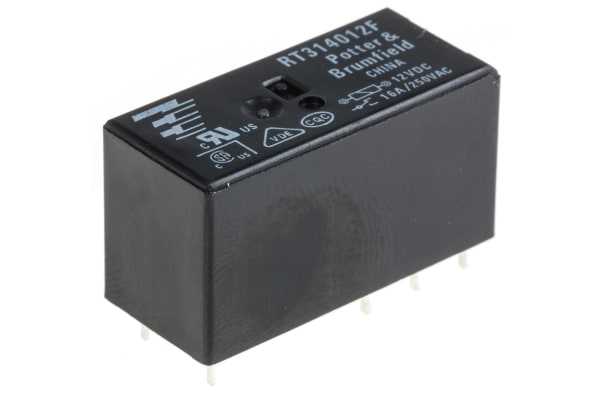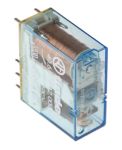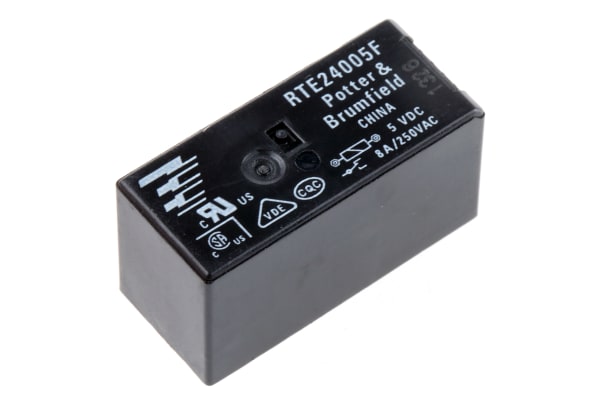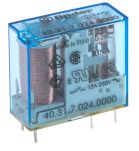Non-Latching Relays
Relays are electrical switches that are operated by electrical impulses with the primary function to open and close a circuit, they can also be referred to as industrial switches. There are 2 main types available, latching and non–latching relays.How do non-latching relays work?Non-latching relays are in a normally closed (NC) position and will stay in this state without power. When power passes through the circuit, the relay switched to a normally open (NO) position by using an internal coil to generate a magnetic force, holding this NO position. Once the current is turned off, it returns to the NC position. This makes non-latching relays well suited to push-button applications like keyboards and micro-controller input buttons.What are non-latching relays used for?Non-latching relays are highly durable and versatile components, making their performance long lasting and suitable for use in a wide range of applications, such as:Automotive enginesHousehold appliancesIndustrial machineryMedical equipmentTelecommunications equipmentWhat is the difference between latching and non-latching relays?Both types of relays in similar in design and function, however, a significant difference between them is that a latching relay will remain in the last position it when it was last powered, whereas a non-latching goes back to its normal position. This makes each more type of relay suitable for different applications. Considerations when selecting a relayWhen choosing a relay, it is important to consider a number of specifications to ensure it is fit for purpose, some factors include:Coil voltage – the required voltage to actuate the switching mechanism. If a voltage is too high this could damage the components, if it is too low then it will not actuate. Contact configuration – This is the state the contacts are in without power. For example SPST, single pole single throw.Contact material – the relay contacts are available in many materials that have certain properties. Common materials are gold, silver, tin oxide and nickel Coil power – the amount of power (watts) the coil operates at. This must match the power in the circuit for correct function. Coil resistance – the amount of resistance (ohms) in the circuit that the coil creates.
-
TE Connectivity, 24V dc Coil Non-Latching Relay DPDT, 8A Switching Current PCB Mount, 2 Pole, RTE24024 1-1393243-0
IDR59,577.52 -
Omron, 12V dc Coil Non-Latching Relay SPNO, 10A Switching Current PCB Mount Single Pole, G6RL-1A 12DC
IDR63,878.01 -
TE Connectivity, 5V dc Coil Non-Latching Relay DPDT, 2A Switching Current PCB Mount, 2 Pole, IM03TS 1-1462037-8
IDR72,688.77 -
Omron, 12V dc Coil Non-Latching Relay SPDT, 8A Switching Current PCB Mount Single Pole, G6RN-1 12DC
IDR57,689.50 -
Relpol, 3V dc Coil Non-Latching Relay SPDT, 15A Switching Current PCB Mount Single Pole, RM50-3011-85-1003
IDR67,024.71 -
Omron, 24V dc Coil Non-Latching Relay SPNO, 16A Switching Current PCB Mount Single Pole, G5RL-1A-E-LN DC24
IDR75,206.13 -
Omron, 24V dc Coil Non-Latching Relay DPDT, 8A Switching Current PCB Mount, 2 Pole, G2RL-24-CF-DC24
IDR79,506.62 -
Omron, 24V dc Coil Non-Latching Relay SPDT, 8A Switching Current PCB Mount Single Pole, G6RN-1 24DC
IDR76,359.92 -
Panasonic, 12V dc Coil Non-Latching Relay SPDT, 2A Switching Current PCB Mount Single Pole, DS1E-M-DC12V
IDR84,016.89 -
Panasonic, 5V dc Coil Non-Latching Relay SPNO, 5A Switching Current PCB Mount Single Pole, APAN3105
IDR63,248.67 -
Omron, 12V dc Coil Non-Latching Relay DPDT, 2A Switching Current PCB Mount, 2 Pole, G5V-2-H 12DC
IDR70,590.97 -
TE Connectivity, 5V dc Coil Non-Latching Relay SPDT, 16A Switching Current PCB Mount Single Pole, RTD14005F
IDR75,311.02 -
Relpol, 12V dc Coil Non-Latching Relay SPDT, 15A Switching Current PCB Mount Single Pole, RM50-3011-85-1012
IDR69,227.40 -
Panasonic, 5V dc Coil Non-Latching Relay SPNO, 5A Switching Current PCB Mount Single Pole, DSP1A-DC5V
IDR96,079.24 -
Omron, 24V dc Coil Non-Latching Relay SPDT, 10A Switching Current PCB Mount Single Pole, G2R-1 24DC
IDR58,004.17 -
Finder, 24V dc Coil Non-Latching Relay DPDT, 8A Switching Current PCB Mount, 2 Pole, 41.52.9.024.0010
IDR79,926.18 -
Panasonic, 4.5V dc Coil Non-Latching Relay DPDT, 1A Switching Current PCB Mount, 2 Pole, AGN200A4H
IDR38,179.96 -
TE Connectivity, 24V ac Coil Non-Latching Relay DPDT, 8A Switching Current PCB Mount, 2 Pole, RT424524
IDR66,919.82 -
Omron, 12V dc Coil Non-Latching Relay SPDT, 10A Switching Current PCB Mount Single Pole, G2R-1 12DC
IDR67,024.71 -
RS PRO, 12V dc Coil Non-Latching Relay SPNO, 16A Switching Current PCB Mount Single Pole
IDR71,430.09 -
TE Connectivity, 12V dc Coil Non-Latching Relay SPDT, 16A Switching Current PCB Mount Single Pole, RT314012F
IDR66,605.15 -
Finder, 12V dc Coil Non-Latching Relay SPDT, 16A Switching Current PCB Mount Single Pole, 40.61.7.012.0000
IDR93,981.44 -
TE Connectivity, 5V dc Coil Non-Latching Relay DPDT, 8A Switching Current PCB Mount, 2 Pole, RTE24005F
IDR87,688.04 -
Finder, 24V dc Coil Non-Latching Relay SPDT, 10A Switching Current PCB Mount Single Pole, 40.31.7.024.0000
IDR85,170.68





